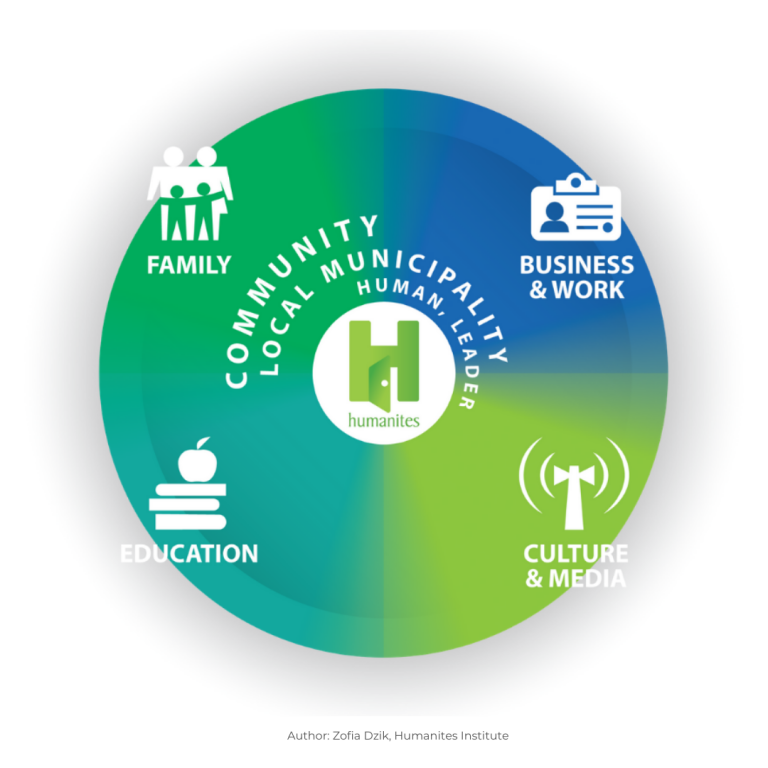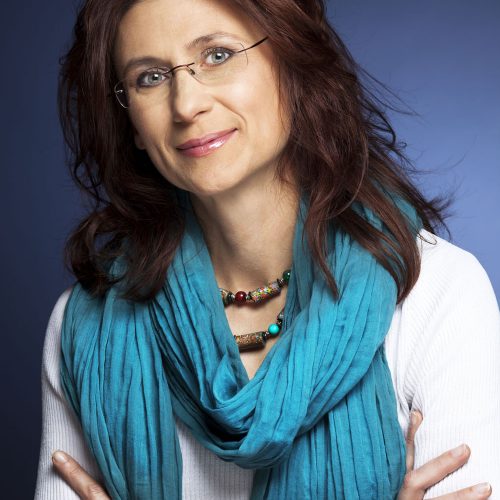Inspired by the African saying that “It takes a whole village to raise one child”, I translated it into “The Village” – Humanites Social Ecosystem Development Model and the associated with it Fractal “The Loop” Model of Non-linear Social Development.
“Village” Model of Social Ecosystem ™
The Model presents the silo-breaking approach to the current business, social, and environmental problems in the entire ecosystem. It focuses on the four, most combined forces that impact the human being and its values, decisions, fears, and competencies.
In conjunction with the current pace of life, changes related to the progressive technological transformation and the development of the GIG and hybrid work Economy, it all translates into the condition of the modern man and his entire ecosystem, which consists of Family, Education, Business, Culture and Media.
These four components are the basis of the “The Village” Model, that I created in 2010, in response to the complexity, complexity and variability of today’s world and the constant search for “new connections” that create the social ecosystem, supporting community and breaking silos.

All my thinking about the ecosystem comes down to trying to answer if and how it is possible to create some stability in variability?
How can we create a network of ecosystems that would provide a stable message as to the basic, universal values that we would like to see more in everyday life, the usual such as taking responsibility, honesty, caring or respect?
Looking at the complexity of the world, I aggregated many social forces to the four main “habitats” that have a key impact on the creation of the ecosystem in which man is born, matures, learns, works, creates and rests. In order to create an environment in which humans will grow and develop.
These habitats are Family, Business and Work environment, Education and the world of Culture and Media
The “Village” Model should be viewed in a fractal way. A fractal is an object of which the full part is a part, which is part of the particle as if a miniature of an even larger part separate. In the case of the Model, this means that the set of the aforementioned “habitats” of a village is repeated at every level of the social structure – from the smallest neighbourhood community, through neighbourhoods, cities, regions, states, communities, to a global view from the perspective of the whole Earth.
In each of the areas of the Village, we define the project that has got two elements: systemic social impact (domino effect) and the ability to engage as many as possible habitats of the village breaking up silos (see the main Projects under Humanites Institute).
I am happy that the model serves as an inspiration for some regions in Poland to build upon it their social capital development strategy.
© Zofiia Dzik

